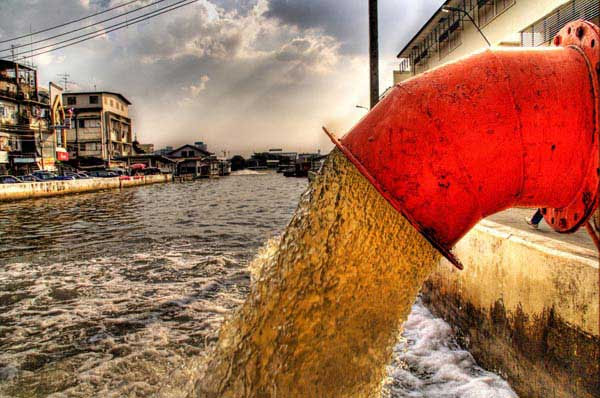| ||||
|
Massive Dumping of Wastewater into Aquifers Shows Big Oil's Power in California
Can Bacher: “The fact that high concentrations are showing up in multiple water wells close to wastewater injection sites raises major concerns about the health and safety of nearby residents.”
READ MORE
Dumping of Wastewater into Aquifers
 Oil industry illegally injected nearly 3 billion gallons of wastewater
Oil industry illegally injected nearly 3 billion gallons of wastewater
As the oil industry spent record amounts on lobbying in Sacramento and made record profits, documents obtained by the Center for Biological Diversity reveal that almost 3 billion gallons of oil industry wastewater were illegally dumped into Central California aquifers that supply drinking water and irrigation water for farms.
The Center said the wastewater entered the aquifers through at least nine injection disposal wells used by the oil industry to dispose of waste contaminated with fracking (hydraulic fracturing) fluids and other pollutants.
The documents also reveal that Central Valley Regional Water Quality Board testing found high levels of arsenic, thallium and nitrates, contaminants sometimes found in oil industry wastewater, in water-supply wells near these waste-disposal operations.
The illegal dumping took place in a state where Big Oil is the most powerful corporate lobby and the Western States Petroleum Association (WSPA) is the most powerful corporate lobbying organization, alarming facts that the majority of the public and even many environmental activists are not aware of.
An analysis of reports filed with the California Secretary of State shows that the oil industry collectively spent over $63 million lobbying California policymakers between January 1, 2009 and June 30, 2014. The Western States Petroleum Association (WSPA), led by President Catherine Reheis-Boyd, the former chair of the Marine Life Protection Act (MLPA) Initiative Blue Ribbon Task Force to create so-called “marine protected areas” in Southern California, topped the oil industry lobby spending with $26,969,861.
The enormous influence that the oil lobby exerts over legislators, agency leaders, the Governor’s Office and state and federal regulatory officials is the reason why Big Oil has been able to contaminate groundwater aquifers, rivers and ocean waters in California for decades with impunity. The contamination of aquifers becomes even more alarming when one considers that California is now reeling from a record drought where people, farms, fish and wildlife are suffering from extremely low conditions in reservoirs, rivers and streams.
Hollin Kretzmann, a Center attorney, criticized state regulators for failing to do their job of protecting precious water supplies from oil industry pollution – and urged Governor Jerry Brown to take action to halt the environmentally destructive practice of fracking in California.
“The fact that high concentrations are showing up in multiple water wells close to wastewater injection sites raises major concerns about the health and safety of nearby residents.”
“The fact that high concentrations are showing up in multiple water wells close to wastewater injection sites raises major concerns about the health and safety of nearby residents.”
“Clean water is one of California’s most crucial resources, and these documents make it clear that state regulators have utterly failed to protect our water from oil industry pollution,” said Kretzmann. “Much more testing is needed to gauge the full extent of water pollution and the threat to public health. But Governor Brown should move quickly to halt fracking to ward off a surge in oil industry wastewater that California simply isn’t prepared to dispose of safely.”
Kretzmann said the State Water Resources Control Board “confirmed beyond doubt” that at least nine wastewater disposal wells have been injecting waste into aquifers that contain high-quality water that is supposed to be protected under federal and state law.
“Thallium is an extremely toxic chemical commonly used in rat poison,” according to a statement from the Center. “Arsenic is a toxic chemical that can cause cancer. Some studies show that even low-level exposure to arsenic in drinking water can compromise the immune system’s ability to fight illness.”
“Arsenic and thallium are extremely dangerous chemicals,” said Timothy Krantz, a professor of environmental studies at the University of Redlands. “The fact that high concentrations are showing up in multiple water wells close to wastewater injection sites raises major concerns about the health and safety of nearby residents.”
The Center obtained a letter from the State Water Resources Control Board to the federal Environmental Protection Agency stating that the Central Valley Regional Water Quality Board has confirmed that injection wells have been dumping oil industry waste into aquifers that are legally protected under the federal Safe Drinking Water Act.
The State Water Board also concedes that another 19 wells may also have contaminated protected aquifers, and dozens more have been injecting waste into aquifers of unknown quality.
The Vote No on Prop. 1 (Water Bond) Campaign responded to the Center’s release of the documents by pointing out the irony of the fact that the same Legislature that nearly unanimously voted to put the water bond on the November ballot also rejected a fracking moratorium in California
“Prop 1 folks tout how it will provide funding to clean up groundwater in the SJ Valley,” according to a statement from the campaign. “This is something we want to see too. But if fracking is unregulated and fracking wells are already leaking, shouldn’t we work on the fracking moratorium first? Or at least simultaneously. And the legislators who passed Prop 1 voted against the fracking moratorium.”
It is no surprise that the State Senators who voted no on the fracking moratorium bill received 14 times more money in campaign contributions from the oil industry than those who voted no on the measure.
Dan Bacher
The TRUTH will set you FREE.






 ;
;
No comments:
Post a Comment